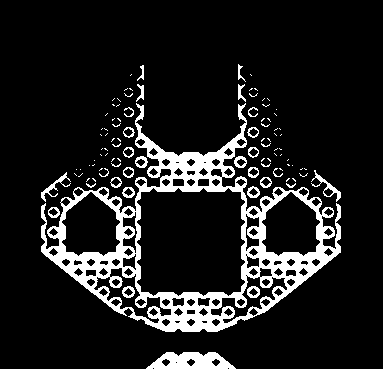If you haven't played my most recent project, Closure, I strongly recommend that you go play it. It is my personal favorite of the games I've created, and by far my most ambitious project to date (although now that I am in the process of moving on to a more advanced language, c++, I have an outlet for more ambitious games than I could ever dream of making in flash). Anyway, I will be writing a few articles on the development process of that game. More thought went into it than any project I've done in the past, partially because I can't think of any other games to compare its mechanic too (although I can definitely compare the end result to Portal and Braid), and partially because I had just finished a game which required the second most thought I've ever put into a game, Aether. I have a lot of things to say about the game that I just need to write down, so maybe you'll read them or maybe you won't, it just feels good to put my thoughts in writing rather than let them steep in my head with nowhere to go.
The process by which I came up with the idea for this game was very different from how I normally work. Normally, ideas tend to pop into my head randomly, and I'll write them down for later use or start working then and there. Not for this one. I saw some black and white art, and was playing around with Adobe Pixel Bender, wondering if I could make a filter that turns a full-color black and white. It looked kinda cool, and I wondered if I could make a game to fit with that graphics style. I said I didn't want to do a simple platformer where everything is dark. This is overused in games, and an unnecessary and painful restriction on what the player can and can't do. I always hated the dark parts of games. They were frustrating for the wrong reasons and I always wished those areas would be over fast. Somewhere around this train of thought the idea came to me to only let the player walk on what is currently visible. It wasn't the perfect idea at the time, and I filed it under "It's the best I have so far, so I'll do that unless I come up with something better." I'm glad I didn't come up with something "better."
The last big puzzle game I release (besides Aether, which was more of a story-based adventure than a puzzle) was Blockslide 2. Blockslide 2 was something I put too much work into. I wanted a massive variety of puzzles, however the only way to do that within the confines of the game was to make a massive number of blocks which all had unique interactions with all the other blocks. I made 150 levels for that game, yet most people never played past the 25 levels in the tutorial. It wasn't well received and I'm pretty sure the reason was because I overwhelmed people with the amount they had to know in order to get into the game and play it. I made it a goal to keep the number of objects in Closure you need to memorize to a minimal. There are essentially 5 types of objects to memorize. Orb (2 variations), Pedestal (2 variations), Key, Door, and No Drop Zone.
The name of the game, "Closure", came pretty early on. It comes from the Gestalt Law of Closure, which states, "The mind may experience elements it does not perceive through sensation, in order to complete a regular figure (that is, to increase regularity)." This is what your mind does when it fills in the blanks, which, ironically, is what I force your mind to NOT do when playing this game. Yet, the word "Closure" in itself has multiple more common meanings, which can all relate to this game in some way or another. It was pretty much the perfect title for the game, and I'm glad I found it so early on. When we made Aether, it was literally the day before release that we found "Aether" for the name.
This is the closure of the first article. You can expect a few more to come before I run out of stuff to say, and I hope that you get something out of them. The next article will have something a little more specific to make, and a point. Cya next time!

